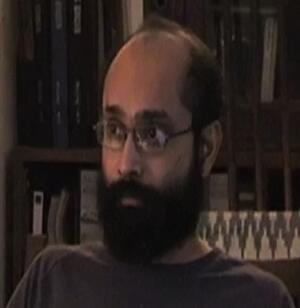Vibodh Parthasarathi: Mediating Actions from Music to Governance
New Delhi, 7 December, 2008: When I first met Vibodh Parthasarathi we found that we had both studied with professor Cees Hamelink, who specialized in International Communication and Human Rights. From that moment on an exchange of thinking and work became an inspiration even though Vibodh developed different areas of expertise than I did.
New Delhi, 7 December, 2008: When I first met Vibodh Parthasarathi we found that we had both studied with professor Cees Hamelink, who specialized in International Communication and Human Rights. From that moment on an exchange of thinking and work became an inspiration even though Vibodh developed different areas of expertise than I did.
When he invited me to come to India to partake in a seminar on media governance just after the Internet Governance Forum had happened in Hyderabad, I realized I would have the opportunity to also pursue the research on witnessed presence and systems design, which I was working on with Intelligent Interactive Distributed Systems group at the VU University of Amsterdam. Vibodh Parthasarathi supported me in this idea and has been instrumental for opening up doors for the here presented research. When we finally had a chance to sit and think together, we met at his house. During the interview electricity broke down twice, which is why parts of the interview could only be recorded on sound and only four fragments of film can be seen. Nevertheless Vibodh’s contribution to the research is crucial; it sheds light from a political and sociological perspective.
----------------------
Read the interview here

 Caroline Nevejan
Caroline Nevejan


 Vibodh Parthasarathi,
Vibodh Parthasarathi,